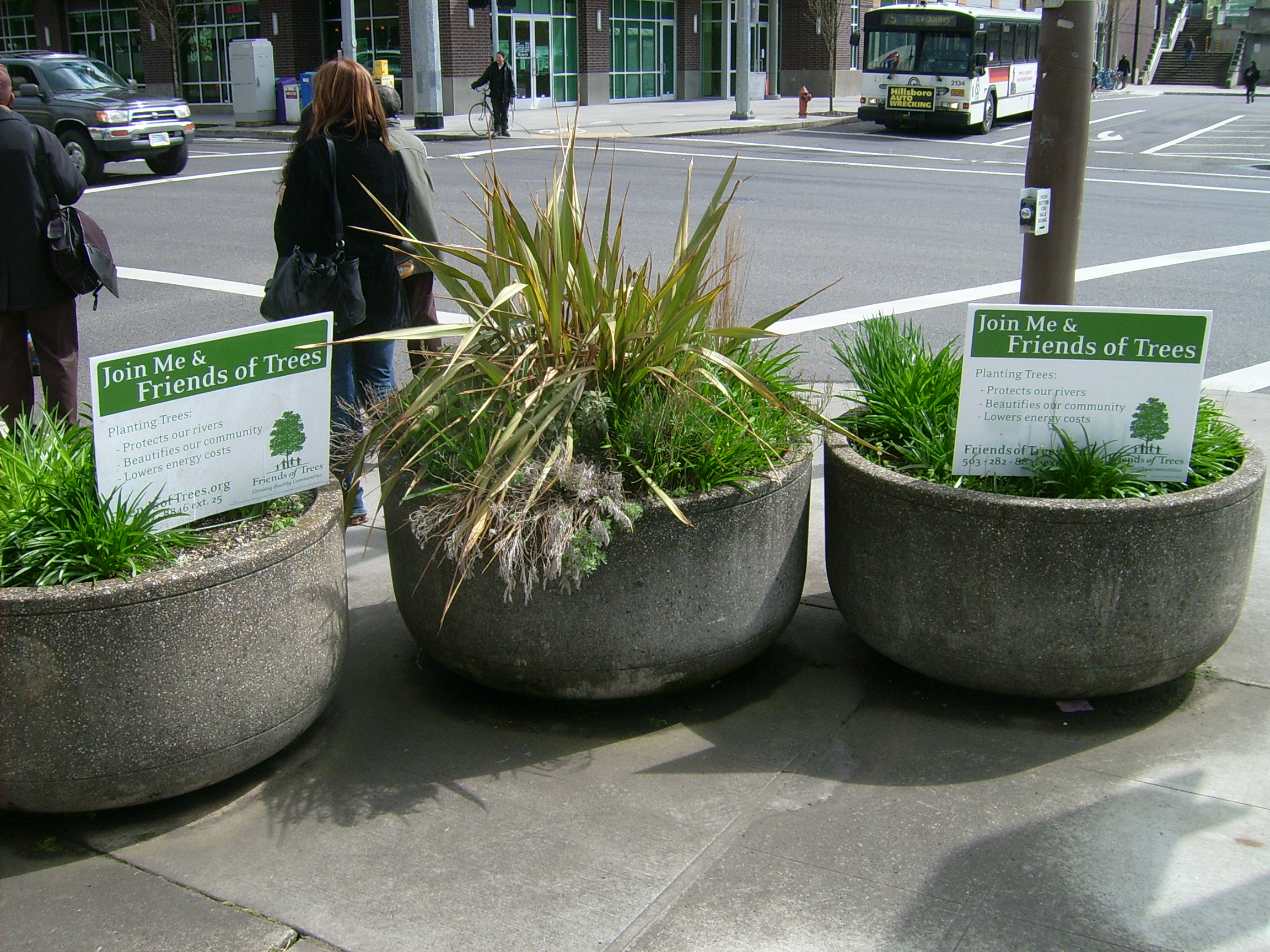I often hear people complain about how our media is further segregating us into compartmentalized categories all for the sake of “target demographics”.  So it was nice to see a use of media that was trying to actually create a feeling of connectedness and community rather than trying to separate it into various niche markets:
The piece of media that I ran into was an advertisement on the streets of Portland, Oregon (picture above) for a Friends of Trees project that reminded me very much of another project local to that city that some enviro activists have told me about before: City Repair. Below is a video that describes The City Repair Project more in detail, which started back in 1996 (as one watches the video, one cannot help but feel the striking similarities between where Portland started and the current way things are in the City of Los Angeles):
Additionally, the signage reminded me of another beautificaton community-run & empowering project that Heal the Bay has been working on in South L.A.: their outdoor public “Living Rooms” (pages 8-9) community spaces that are currently installed on the corner of Vemont & Manchester AVE and the corner of Main & 91st/92nd ST (with a third one slated to be installed on the corner of Broadway & Century Blvd).
But I guess I should back up and first explain that the reason I went up to Portland was because I was part of a delegation from South L.A. that included community leaders, agency representatives, and activists that the City of Los Angeles put together and flew out to Portland, Oregon to study the transit system there. The purpose of the trip was to give us a first-hand experience of the Portland’s so-called Transit-Oriented Development in light of the fact that the Expo Line is in the works to soon be built in Los Angeles, which will touch on a portion of a South L.A.  In the written materials that were presented to us South L.A. folks, the City of L.A. explained why visiting Portland was key:
Representatives from communities around the country and the world visit Portland to see first-hand how good planning around a new rail transit line can lead to successful places for housing, retail, office, and educational uses. Portland gives visitors a unique opportunity to see both how mature communities work with rail transit and how transit lines reach into newer communities.
Portland has been successful in strengthening communities around transit by focusing on how to make them more walkable, affordable, vibrant, diverse, and sustainable with a mix of building types, public open spaces, and plazas. The City has also been successful at encouraging better developments near transit lines and in achieving community-wide public involvement in the planning and design process.Â
Overall, I was struck with how powerful small incremental, but nevertheless coordinated, steps can be towards creating lines of connections between communities. The perfect example in Portland of how synergy can be crafted for the purposes of creating a more pedestrian-friendly atmosphere is that of the Pearl District. The story of how that place came to look like it does now is simply amazing. It started out as a bunch of “rail yards and empty warehouses” and eventuall became a hub of urban renewal in large part thanks to the business community taking the leadership to work with the city. The Pearl district is not the only jewel of Portland’s success of blending space and creating more community-friendly atmospheres; other examples include the Sea Change Gallery and the supportive housing projects, to name a few. Granted, Portland Oregon has very different circumstances than L.A. Yet, it was striking and quite surprising to hear similarities in the way Portland used to be at one point compared to how L.A. is currently set up. As I look for our own examples of projects here in L.A. that have the potential for making those kinds of connections among centers of activity (since Los Angeles is basically a cluster of cities) and thus lay the framework for further blending of space, the first that comes to mind is the Los Angeles River Rivatilization project.  As we explored the Portland transit rail lines, what became immediately evident was that a city’s agencies and community groups need to work in concert-it is an absolute necessity. I mean, for God’s sakes, even Portland State University seemed to be very actively and aggressively involved in the development of public transit and overall landscape of the surrounding areas near the campus. Will USC and/or UCLA ever be like Portland State U.? Will the different mismatched groups that make up L.A. ever work in concert just like Portland’s? I hope so, for the sake of our future.
